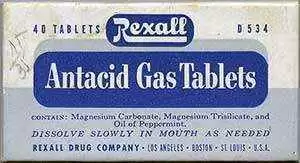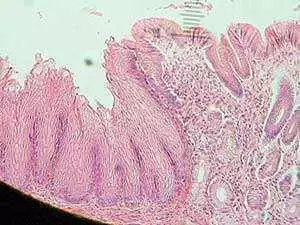Celiac.com 06/28/2013 - Celiac disease has been linked to gastroesophageal reflux disease (GORD) and eosinophilic esophagitis (EoE), but there is very little data from population-based studies on the rates of shared disease among these groups. To get a better picture of the issue, a team of researchers recently set out to conduct a population-based study on rates of celiac disease in people with gastroesophageal reflux disease (GORD) and eosinophilic esophagitis (EoE).
 The research team included Jonas F. Ludvigsson, Pertti Aro, Marjorie M. Walker, Michael Vieth, Lars Agréus, Nicholas J. Talley, Joseph A. Murray, and Jukka Ronkainen. They are variously affiliated with the Department of Medicine at Karolinska University Hospital and Karolinska Institutet, Clinical Epidemiology Unit, in Stockholm, Sweden, the Department of Pediatrics at Örebro University Hospital in Örebro, Sweden, the Departments of Medicine and Immunology in the Division of Gastroenterology and Hepatology at the Mayo Clinic College of Medicine in Rochester, USA, the Department of NVS, Center for Family and Community Medicine, Karolinska Institutet, Stockholm, Sweden, the Faculty of Health at the University of Newcastle in Newcastle, Australia, the Institute of Pathology in Bayreuth, Germany, the Primary Health Care Center of Tornio, Finland, and the Institute of Health Sciences at the University of Oulu in Oulu, Finland.
The research team included Jonas F. Ludvigsson, Pertti Aro, Marjorie M. Walker, Michael Vieth, Lars Agréus, Nicholas J. Talley, Joseph A. Murray, and Jukka Ronkainen. They are variously affiliated with the Department of Medicine at Karolinska University Hospital and Karolinska Institutet, Clinical Epidemiology Unit, in Stockholm, Sweden, the Department of Pediatrics at Örebro University Hospital in Örebro, Sweden, the Departments of Medicine and Immunology in the Division of Gastroenterology and Hepatology at the Mayo Clinic College of Medicine in Rochester, USA, the Department of NVS, Center for Family and Community Medicine, Karolinska Institutet, Stockholm, Sweden, the Faculty of Health at the University of Newcastle in Newcastle, Australia, the Institute of Pathology in Bayreuth, Germany, the Primary Health Care Center of Tornio, Finland, and the Institute of Health Sciences at the University of Oulu in Oulu, Finland.
Celiac.com Sponsor (A12):
For their study, the team conducted endoscopes on a thousand randomly selected adults from the general population.
They defined celiac disease as positive serology together with mucosal abnormalities of the small intestine. They defined any eosinophil infiltration of the esophageal epithelium as esophageal eosinophilia and EoE was defined as having at least 15 eosinophils/high-power field in biopsies from the distal esophagus.
They used Fisher's exact test to compare the prevalence of GORD, esophageal eosinophilia, and EoE in subjects with celiac disease, and to compare the realists with those of the control group.
Of the 400 subjects (40%) with gastroesophageal reflux symptoms (GORS), 155 (15.5%) had erosive esophagitis, 16 (1.6%) had Barrett's esophagus, 48 (4.8%) had esophageal eosinophilia, and 11 (1.1%) had EoE.
They diagnosed celiac disease in eight (2%) of the 400 individuals with GORS, compared to 10 of 600, or 1.7% for the control group (p = 0.81). They also diagnosed celiac disease in 3 of 155 subjects (1.9%) with erosive esophagitis, compared with 15 of 845 (1.7%) of control subjects (p = 0.75); and 2 cases of celiac disease from the 48 (4.2%) individuals with esophageal eosinophilia (controls were 16 of 952 (1.7%), p = 0.21).
They found no celiac disease, however, in any of the 16 subjects with Barrett's esophagus, while they did find 18 cases among the 984, or 1.8% of control subjects; p = 1.0.
Nor did they find celiac disease in any of the 11 individuals with EoE, compared with 18 cases in the 989, or 1.8% of control subjects; p = 1.0.
Because this population-based showed no increased risk of celiac disease among individuals with GORD, esophageal eosinophilia, or EoE, they conclude that there is no need to conduct celiac screening of individuals with GORD, or EoE screening of individuals with celiac disease.
Source:
- Open Original Shared Link









Recommended Comments
There are no comments to display.